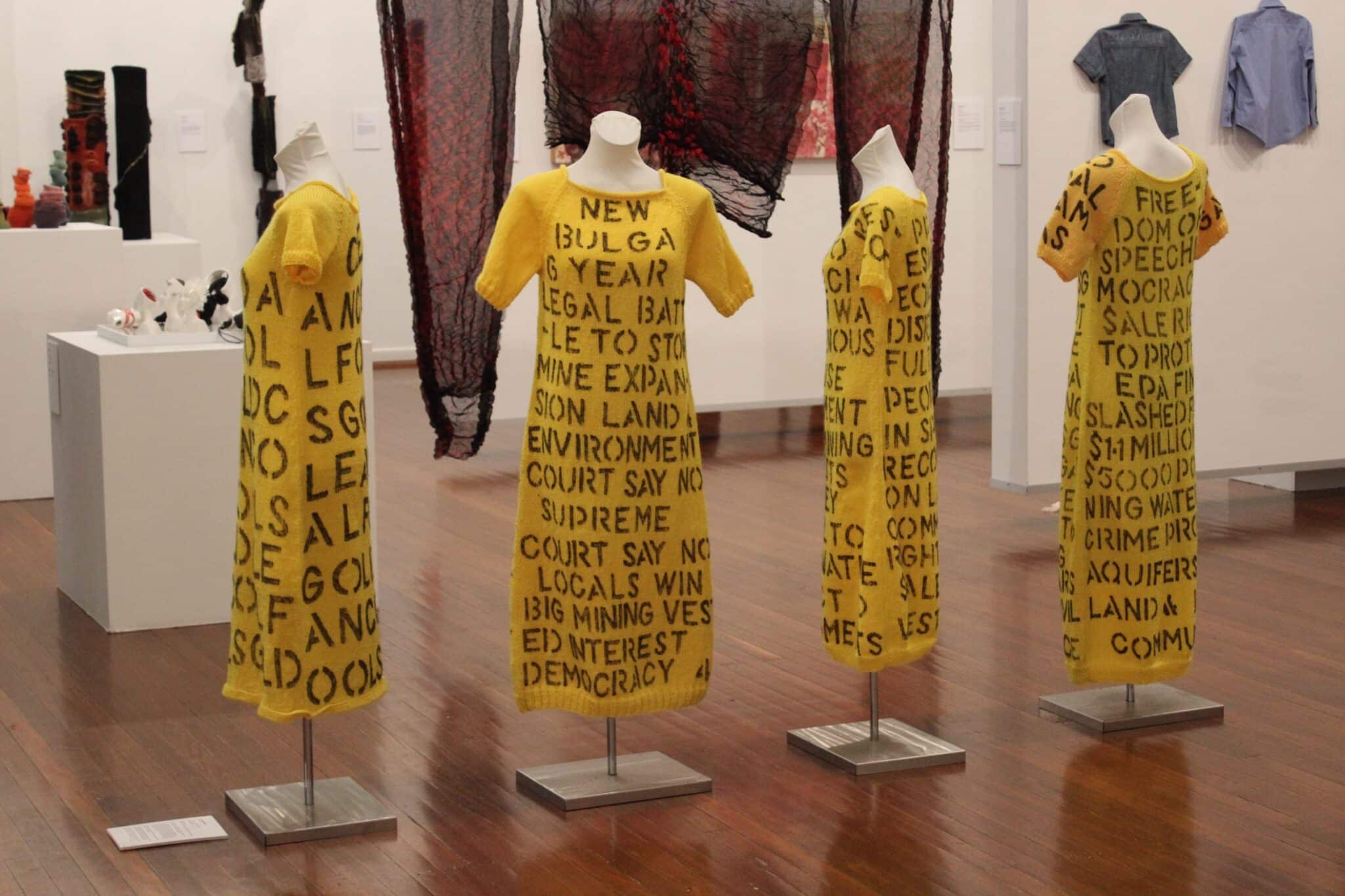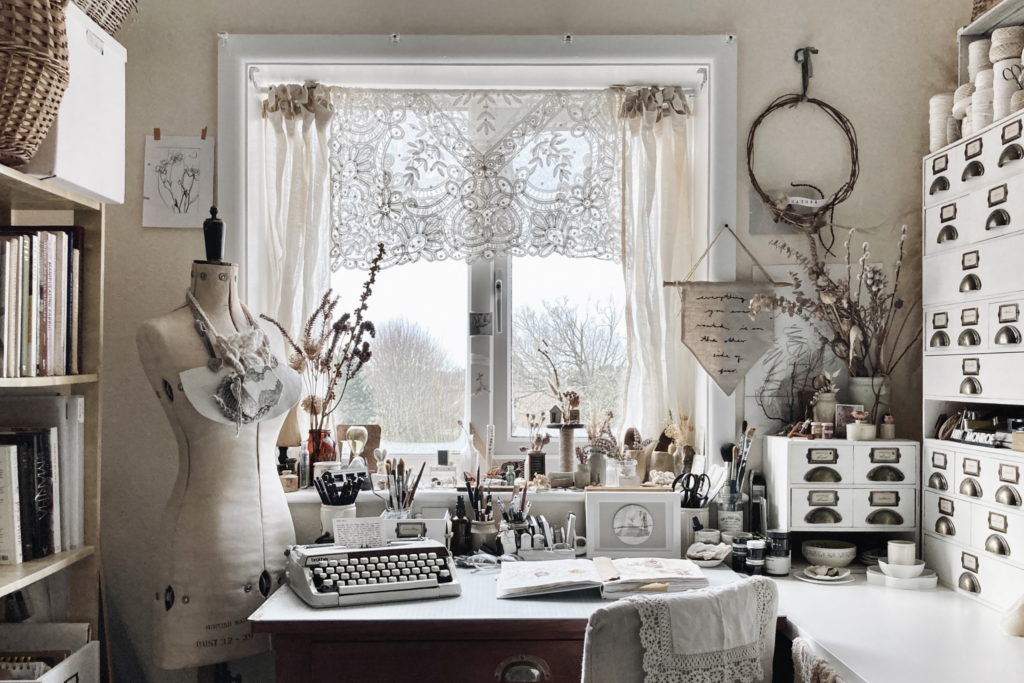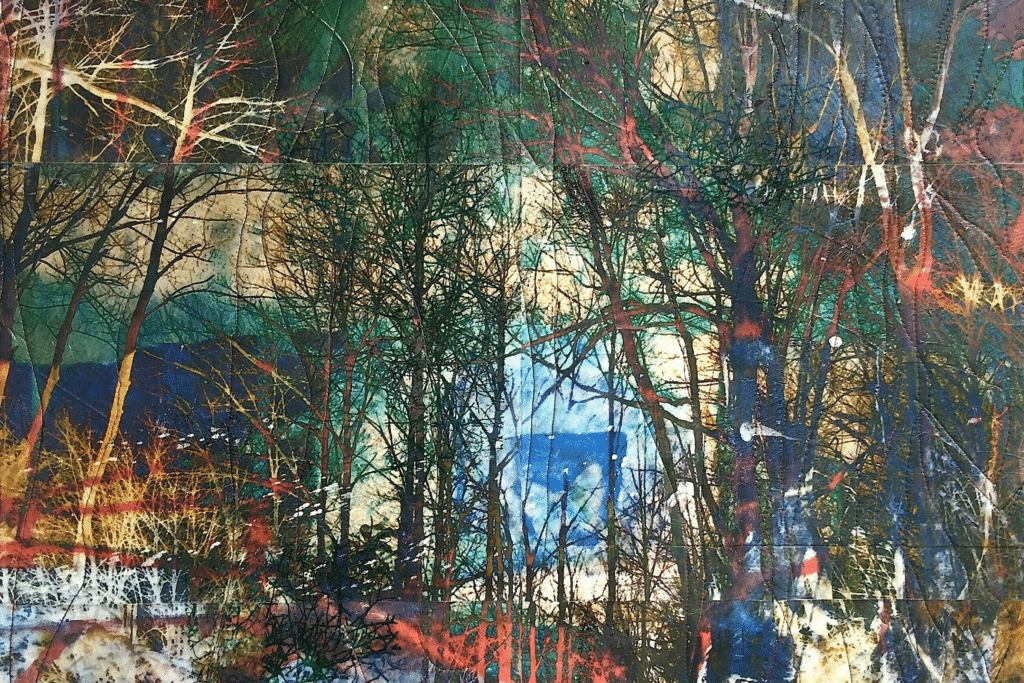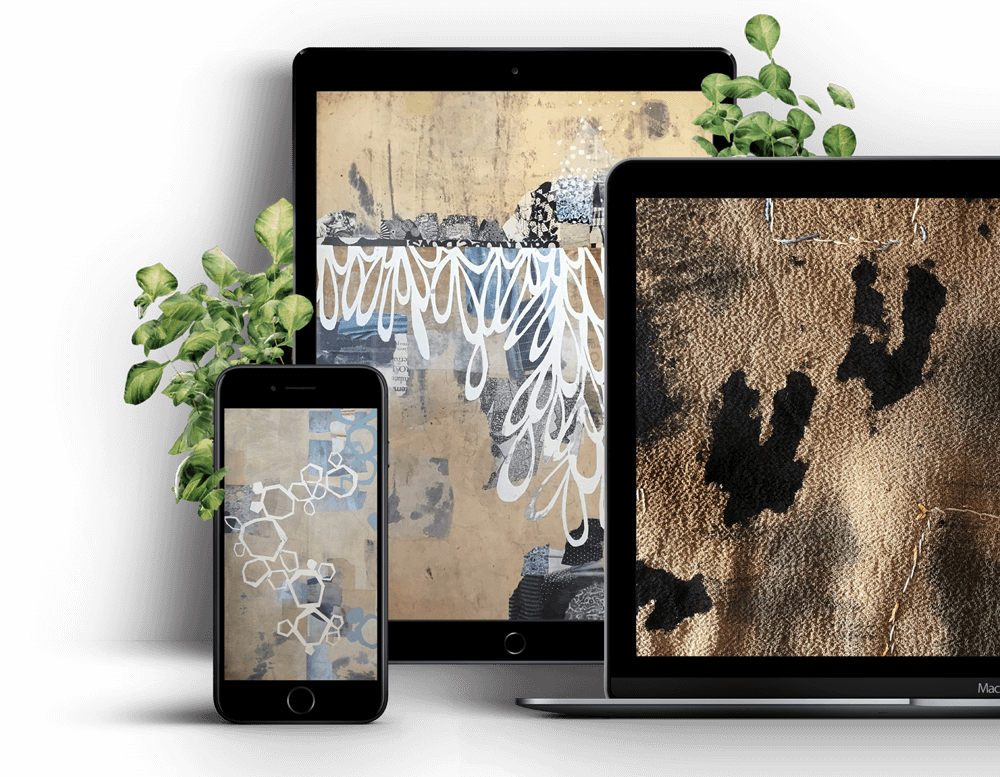Karen Olson: Grief and flow
After a transformative personal loss, Karen Olson graciously opened up about her journey and her healing process through the grief with Fibre Arts Take Two.
Karen Olson’s Friday Feature Artist Interview can be found at the bottom of this page.
Karen’s journey as an artist began early, and she embraced creativity from a young age. Yet her influence was not from other artists but rather from the expensive, natural world that surrounded her.
Approximately a decade ago, Karen underwent a transformative shift as she embarked on an independent study of art therapy, exploring the intricacies of the mind, neuropsychology and our subconscious’s role in the creative process. However, life dealt Karen a series of profound losses, leaving her with the weight of PTSD and limited cognitive function.
Fuelled by her studies and a relentless pursuit of healing, she became a dedicated student of creativity, learning to harness the flow state to express her emotions and experiences. Karen was kind enough to share her grieving process with Fibre Arts Take Two and to explain some of the methodology, including flow, that helped her get through it.
Grief
Karen grew up in Connecticut in what she calls a typical blue-collar family. She discovered painting, but it was a tragic occurrence more recently that has since shaped her life, “In 2018, I lost my husband,” she says, “It was a really profound loss. It was very sudden. We were married young, but we were really like two trees that the roots had grown together. So when he died, I did feel like the roots were ripped apart.”
Karen didn’t realise it then, but she was in shock for about three months, “My days were very surreal and extremely painful,” she says, “My brain could not make sense of it at all. I remember going to a public event, and a friend asked me, how are you doing? And my brain just shut right down. It was like the computer crashed. How do I answer that question? I couldn’t come up with it, and I had to go home and sleep.”
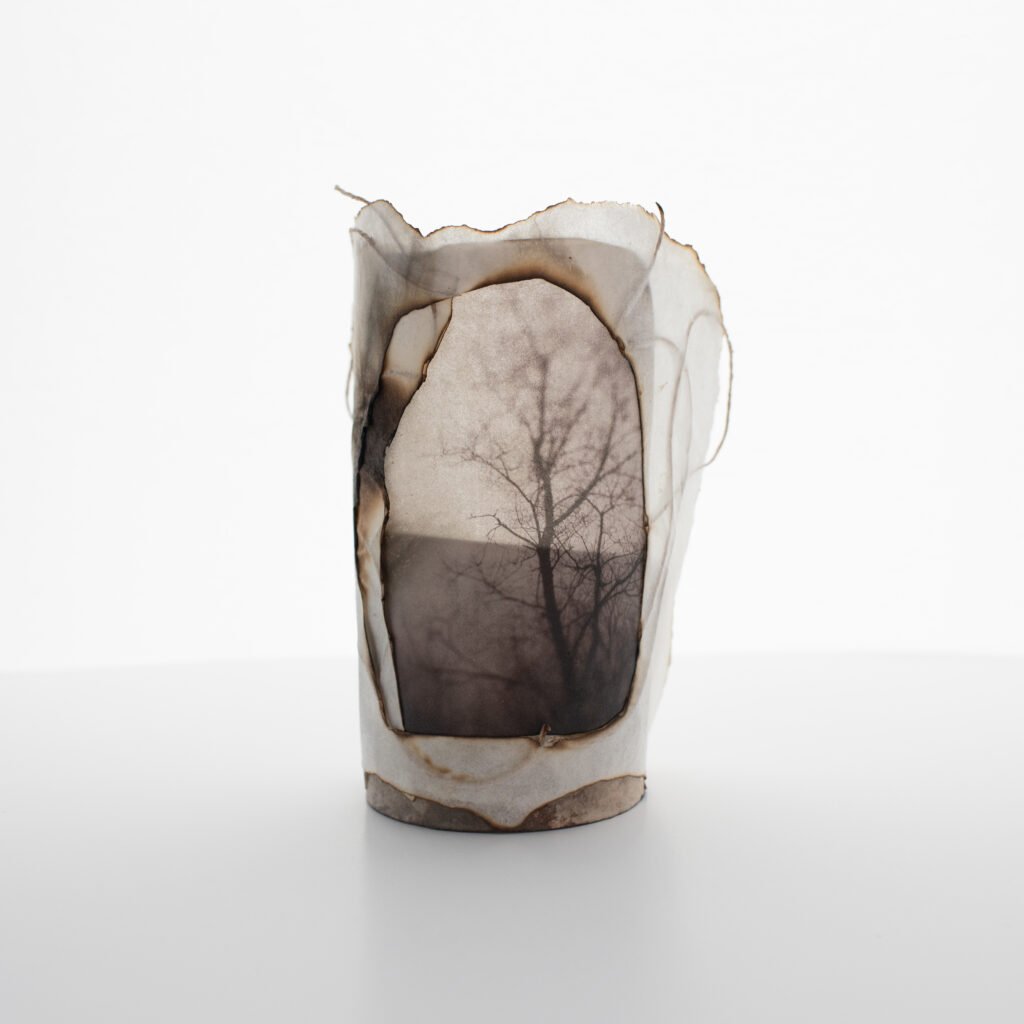
Change
By spring 2019, Karen’s brain started to make new connections, “I was starting to get used to my new reality,” she says, “but I was dealing with the effects of post-traumatic stress. I had many fears, but my worst fear was staying stuck in that state. So, that motivated me to work hard at seeing what I could do about it.
So, I studied anything I could get my hands on that would give me insight into what was happening and what was going on. How can I help it?
Karen started studying everything she could to give her insight into what was happening, “Then, a year later, in the fall of 2019,” she says, “we lost another very dear family member. My son-in-law’s sister died of cancer, and now I wanted to be that person who could show up for others. I wanted to be the person that I needed when I was feeling that intense grief, but I realised I had to find a place for the pain I had experienced to live first before I could begin the healing process and show up for others.
I kept trying to study neural psychology, learning everything I could about how the brain works, and two things stood out. First of all, you need to acknowledge your feelings and express them in writing or with imagery, whatever your process may be. And also craft opportunities for flow.”
Flow
Flow is a state of intense concentration when you are focused solely on what you are doing and time seems to slip away, “In flow, your brain becomes extremely active,” says Karen, “Three types of brainwaves are active at the same time. So you have the alpha, beta, and gamma waves all firing during this time of flow.
Gamma waves are associated with bursts of insight and high-level information processing. Our prefrontal cortex, which is what we usually use, the cognitive function part of our brain, is not active at this time, but our imagination is wildly active. The neural chemicals that are produced boost performance. So essentially, we are creating a new reality while in flow.”
This is why flow is so important when you’re healing from trauma, “Because you need to create a new reality,” says Karen,” Our brain doesn’t really know how to do that in the day-to-day, in that prefrontal cortex scenario. Hence, it needs to be encouraged to feel like, yes, new things and situations will happen, and it’s okay to be there in those new situations. I’d like to quote Mark Pierce, who says the intuitive part of our mind, which lives in the subconscious, is the key to unlocking inspiration and imagination.”
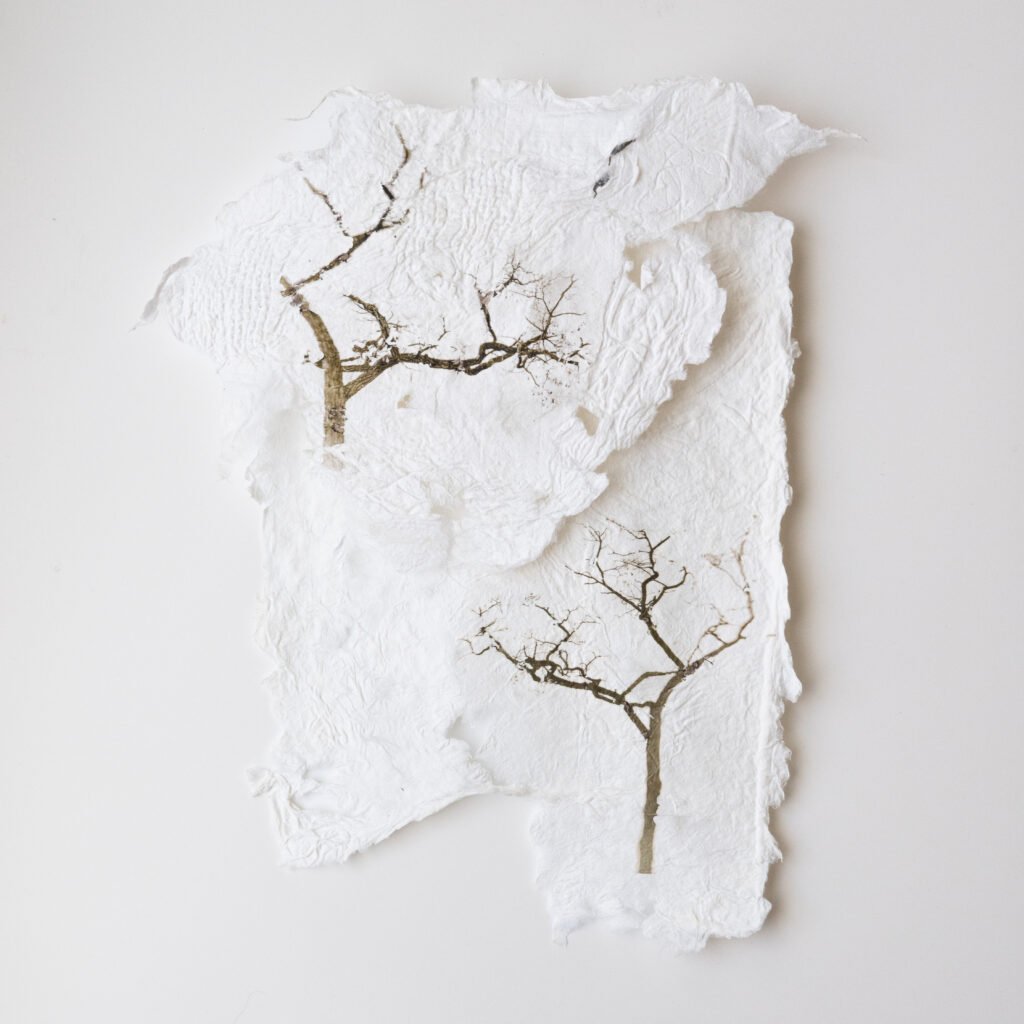
Accessing the subconscious
The trick to finding flow is to access the subconscious while still in a conscious state,
“There’s a couple of things that need to come into play,” says Karen, “Curiosity is one. When we are curious about something, maybe it’s a technique or material, something in the natural world. Hold on to that. Sometimes we are curious, but we’re like, ‘Oh, I’m too tired to think about it.’ Don’t do that. Do the other things. Say, ‘I’m going to study about it. I’m going to read about it. I’m going to take notes about it.’ So when that interest is piqued, we enter that sense of discovery. So, we’re further exploring the possibilities. That is the precursor to getting ready for flow.”
When you’re at the point that you are ready to start creating, you need to craft your environment, “So we need to have it free from distraction as much as we possibly can,” Karen says, “I find that I have to pump up my energy level. We have to get the blood flowing. I put on music. I start dancing, moving my body and getting the blood flowing to my brain. It also helps me to stop thinking about everything else that has been going on in the day, and most important, I think, is the action that we’re then going to take to create creative flow.”
That action, Karen says, is finding the right level of challenge, “What we need is a challenge,” she says, “but something within the realm of possibility. So we want to ensure we can accomplish it, but it’s not too easy to accomplish. So that spectrum between something too familiar and too wacky, in the middle. So that realm of possibility of really getting in there and working out something that’s going to get that brain in that space, and amazing things can happen”.
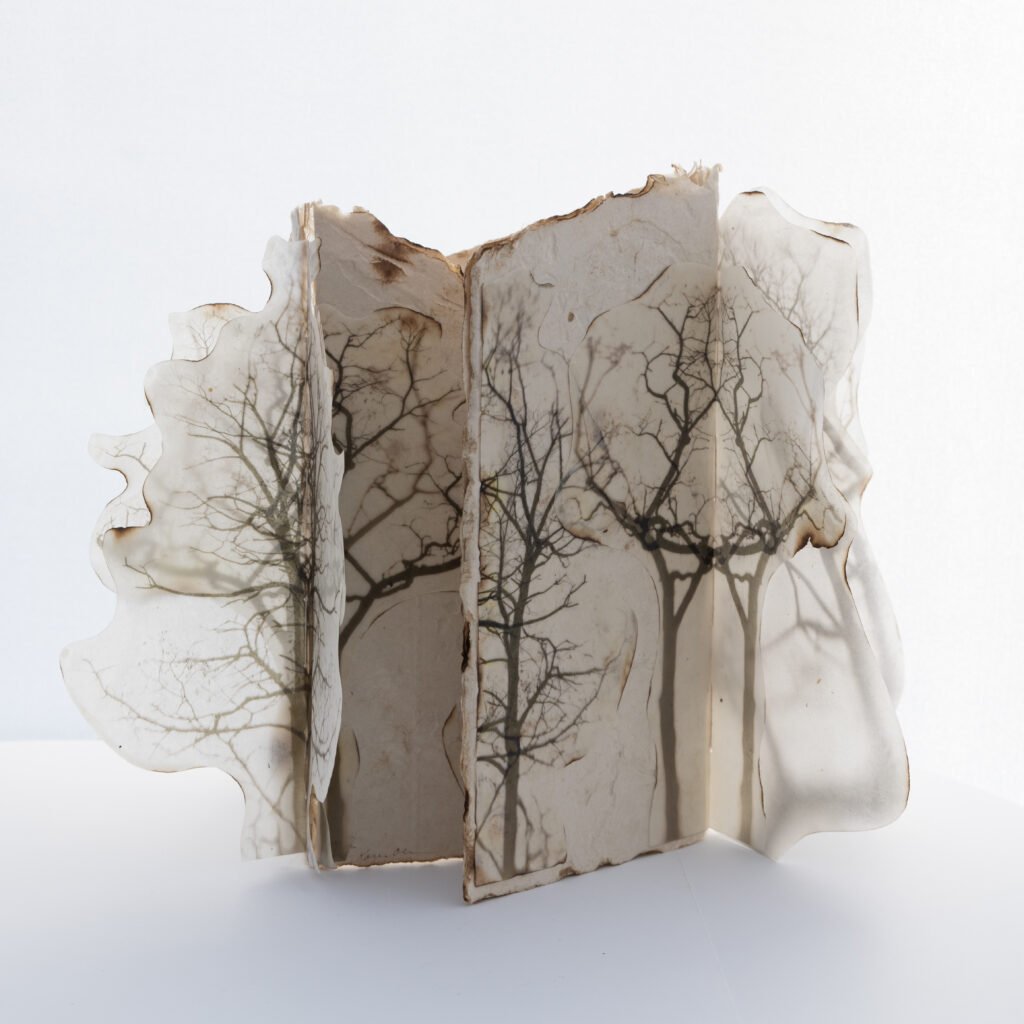
Karen Olson – Maine Lens-Based Artist
When trees converse, the air is charged with chemical substances, fragrances, hormones, and electrical connections. Placing herself in the middle of the conversation, she is illuminated by it. Karen is keenly interested in this human-nature connection and how it supports and fosters mental health and interpersonal communication, making these the subject of her latest projects.
This artist’s work is conceptual and lens-based, exploring subjects such as grief, trauma, forest bathing, and the psychology of the creative process. Constructing, deconstructing, and constructing further with physical materials and digital files imitates the natural cycles of growth and decay. Elements are digitally captured, blended, and intertwined. Fibers, papers, and photographs are formed and sculpted, adding weight and texture. Creatively, she seeks an open dialogue with the materials and the subject, encouraging collaboration and interchange.
Karen creates intimate landscapes that are ethereal and immersive. They offer the viewer respite and recovery, a safe place to explore feelings and emotions.
Related Posts
Join Our Newsletter
OUR YOUTUBE CHANNEL
View our interviews and more on our Youtube channel!
OUR FACEBOOK GROUP
Join our Community and stay updated with our upcoming announcements!
